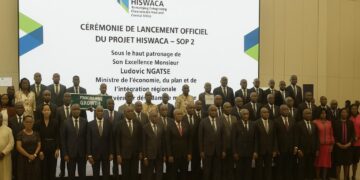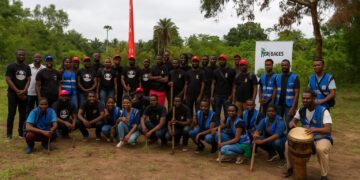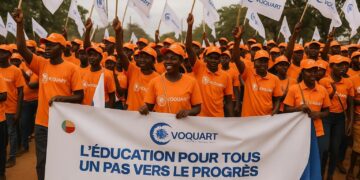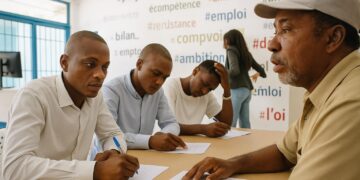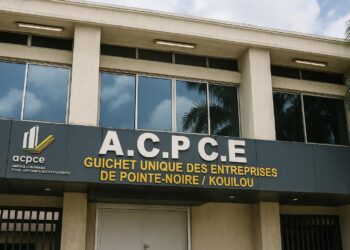Steering committee charts mid-term course
Sitting in an austere meeting room in Brazzaville on 8 October 2025, the steering committee of the Digital Transformation Acceleration Project, known by its French acronym PATN, delivered its first full mid-term evaluation. The discussion mixed optimism with pragmatic adjustments, setting the tone for the next phase ahead.
Chaired by Sylvain Lekaka, chief of staff to the Minister of Economy and head of the steering committee, the session reviewed activity logs, implementation indicators and risk matrices. Participants also framed priority guidelines for papers that will shortly be transmitted to the World Bank, the project’s anchor financier.
Financing and performance metrics
Coordination unit leader Michel Ngakala presented a concise readiness report highlighting achievements as well as bottlenecks. According to him, sixty percent of the 100-million-dollar envelope has been disbursed since the project became effective in January 2023, keeping expenditure aligned with the time elapsed in the implementation schedule so.
Technical milestones flagged as complete include network mapping for state agencies, initial deployment of secure data centres and baseline studies for the forthcoming e-government portal. Still pending are software procurement contracts and interoperability standards, which the committee expects to finalise during the first quarter of 2026 without delay.
Financial dashboards presented by the Ministry of Economy show commitments tracking comfortably below the disbursement cap, creating headroom for contingencies. Exchange-rate risk remains limited, as the US-dollar-denominated loan is mostly hedged through the regional central bank. Audit trails have been described as ‘satisfactory’ by external reviewers to date.
Institutional coordination and capacity building
In his closing remarks, Lekaka urged line ministries to accelerate absorption. The project, he noted, touches education, health, finance and civil service, making cross-agency ownership essential. ‘Every day saved means extra value for citizens,’ he said, underscoring projected fiscal savings once full digital workflows replace paper forms nationwide.
Early indicators suggest the efficiency dividend could exceed initial forecasts. Preliminary modelling by the coordination unit estimates annual budgetary relief equivalent to 0.4 percent of GDP through reduced administrative overheads and improved tax collection. Such gains, if confirmed, would strengthen the Republic’s medium-term fiscal consolidation path going forward.
Attention now turns to human-capital constraints. Digital literacy workshops for civil servants have begun, yet participation levels vary widely among agencies. The steering committee plans to link future disbursements to training completion rates, creating an incentive for managers to release staff for intensive capacity-building sessions over coming months.
Infrastructure alignment and private-sector outlook
Another challenge is last-mile connectivity in rural districts. The Ministry of Posts, Telecommunications and Digital Economy is sequencing fibre deployment along backbone corridors financed under separate public-private partnerships. Alignment between those timelines and the PATN’s software roll-out will be reviewed in November during a joint retreat near Dolisie.
Bank supervision missions have highlighted governance improvements since the project’s inception. The appointment of an independent procurement monitor in early 2024 has shortened bidding cycles by an average of twenty days. Stakeholder interviews suggest suppliers now view the tender process as clearer and more predictable than previously experienced.
Private-sector representatives attending the mid-term reunião welcome the momentum. ‘Better digital infrastructure lowers entry costs for small firms,’ remarked a local fintech executive, predicting ripple effects on mobile money uptake and e-commerce. The steering committee is exploring sandbox regulations to nurture such innovation while safeguarding consumers and investors.
Inclusion, diversification and governance dividends
Social inclusion remains a guiding principle. Thirty percent of training slots are reserved for women, and the project is financing a gender-sensitive user-experience audit of forthcoming platforms. Civil society groups present at the meeting insisted that connectivity subsidies for disadvantaged schools stay on the agenda throughout implementation period.
From a macroeconomic standpoint, the timing aligns with government ambitions to diversify away from hydrocarbons. By digitising public services, officials aim to shorten business registration to less than five days and accelerate customs clearance. These improvements are expected to lift the Republic three ranks in the Doing Business-style benchmarks.
Roadmap to 2027 and investment signals
Looking ahead, the steering committee confirmed December 2027 as the unchanged closing date. However, members signalled a possible restructuring during 2026 to redirect unspent balances towards cyber-security, an area growing in relevance. A request for non-objection will be drafted for Bank consideration once feasibility studies conclude next summer.
Both the Presidency and Parliament have voiced support for the initiative, citing its alignment with the national Development Plan and the African Union Digital Transformation Strategy. This political backing reassures investors that policy continuity will prevail, a prerequisite for technology vendors contemplating multi-year service-level agreements in the country.
As the meeting adjourned, Lekaka summarised expectations in one sentence: ‘We are halfway there; delivery must now accelerate.’ With clearer metrics, stable financing and high-level commitment, PATN appears well-placed to translate digital aspirations into tangible gains for citizens, businesses and public finances by 2027 across the entire economy.





